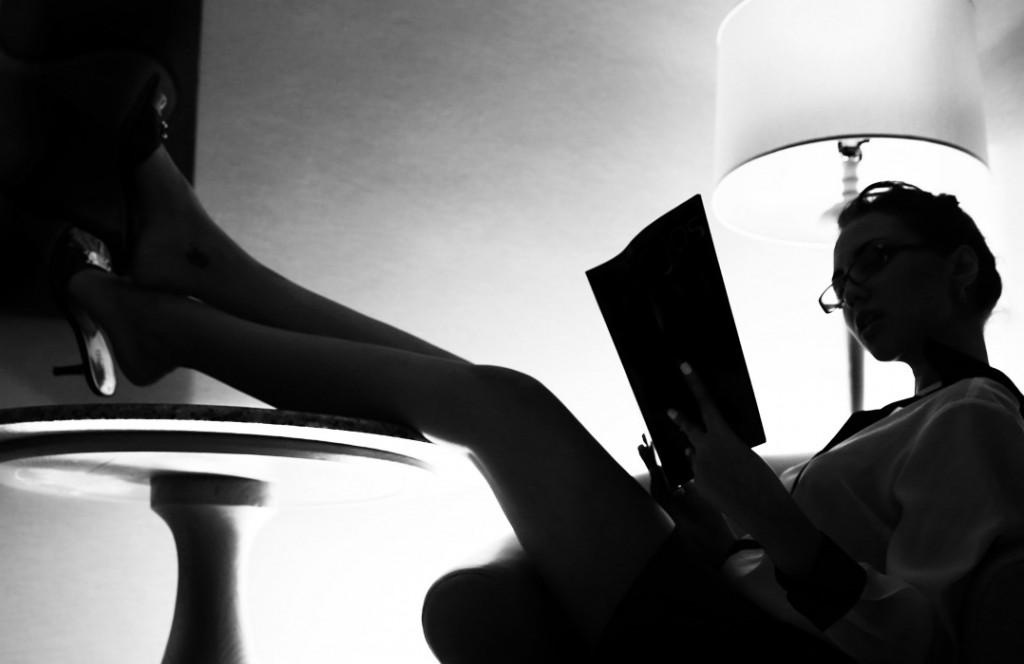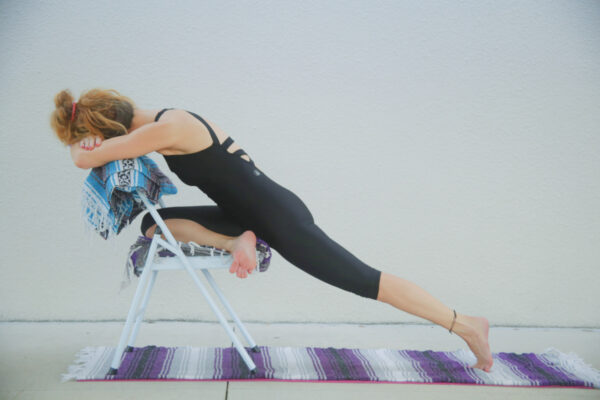Ever wondered why the sight of someone in their late forties and up peering over a pair of reading glasses is such a common occurrence?
The answer is simple and can be summed up in a single word: presbyopia, a condition defined by the National Library of Medicine as a “slow decrease in the ability of the eye to focus on nearby objects.”
Vision changes as we age
Just as our joints can stiffen up with age, so do our eyes, resulting in that loss of focusing ability.
Yes, you read that correctly–it’s part of getting older, and it most likely has happened or will happen, to you.

So does that mean that reading glasses are sure to be part of your future, forever and always? Not exactly.
Developing alternatives, from the expected (contact lenses) to the fabulously futuristic (a mobile app?!) may make reading glasses a thing of the past.
(As with anything that involves your eyes or general well-being, you’ll want to talk these options over with your doctor and discuss potential side effects and outcomes.)
So, put your own glasses on before you bid them a fond adios, and read on to find out how to ditch your specs for good.
Try monovision, bifocal or multifocal contact lenses
Three types of contact lense that can help with presbyopia are Monovision, Bifocal and Multifocal, and do not require surgery.
Monovision means wearing two different strength contact lenses–one for seeing close-up, the other for seeing far away.
Bifocal and multifocal contact lenses such as Air Optix offer two or three differing strengths within one lens. (Imagine progressive glasses, but as a contact.)
They all require prescriptions; ask your doctor if one of them might be right for you.
Also Read: 7 Lifetime Beauty Habits to Look Fabulous at 50
Have multifocal lenses implanted
Multifocal Intraocular Lenses (IOL) aren’t the kind of lenses you pop in during your morning routine and take out at night; they’re often implanted during cataract surgery.
While they don’t guarantee freedom from reading glasses, some have found that their newfound ability with the IOL allows them to achieve different levels of focus, making reading glasses unnecessary.
Investigate Lasik surgery
If Monovision lenses work for you, they may be the first step towards fixing your presbyopia with a type of LASIK surgery called LASIK Monovision.
As with the Monovision lenses, one eye is surgically corrected to see close-up, and the other for far away.
While there is a period of adapting after surgery, trying Monovision lenses first can help make the adjustment after surgery much easier.
Download a mobile app
Seems like there’s an app for everything these days, right? Shopping, ordering food, putting together meal plans… and training your brain to read without reading glasses.
Wait, what?
It sounds like science fiction, but the GlassesOff app offers a series of personalized sessions for the user that purport to “exercise the visual cortex of the brain to achieve comfortable reading” without reading glasses.
Slip on some shades
If you’re comfortable with your reading glasses for now but want to explore a different aesthetic, try combing the chic look of sunglasses with bifocals.
Available in different colors and styles, reading sunglasses bring a little bit of glamour to the necessity that is using reading glasses.
And switching things up a bit with a new pair of shades may be just what you need while you ponder other alternatives to traditional reading glasses, whether via surgery, technology, or something in between.
Rock funky progressive lenses
If having to deal with contacts or surgery creeps you out, but you still don’t want to be wearing reading glasses around your neck all day, go for progressive lenses.
Even if you don’t need a prescription for distance, it’s far more chic to sport great-looking frames all day that make a fashion statement than peering over granny readers on and off.
And you can always toggle between glasses and contacts depending on your mood.





Leave a Reply